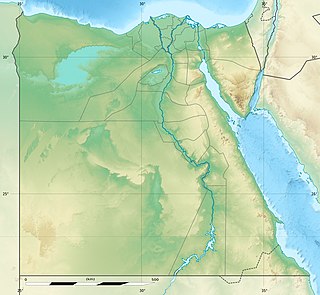 W
WThe Abu Agag Formation is a Turonian geologic formation in Egypt and Sudan. Indeterminate fossil ornithischian tracks have been reported from the formation.
 W
WThe Ambolafotsy Formation is a Turonian aged geological formation in the Diego Basin of Antsiranana Province in Madagascar. It is a mostly terrestrial unit deposited during a marine regression close to the shoreline. The dinosaur Dahalokely has been discovered in the formation.
 W
WThe Ankarafantsika Formation is a Late Cretaceous (Cenomanian) geologic formation of the Mahajanga Basin in the Boeny region of Madagascar, Africa. The fine-grained sandstones of the formation were deposited in a fluvial to lacustrine environment.
 W
WThe Ankazomihaboka Formation is a Coniacian geologic formation in the Mahajanga Basin of northwestern Madagascar. The formation comprises claystones and sandstones deposited in a fluvial to lacustrine environment. The formation is overlain by the Marovoay Beds and overlies basalt.
 W
WThe Aoufous Formation is a geological formation that contains some of the vertebrate assemblage of the Kem Kem Group, of Late Cretaceous date. Two other formations comprise the Kem Kem beds: the underlying Ifezouane Formation and the overlying Akrabou Formation.
 W
WThe Bahariya Formation is a fossiliferous geologic formation dating back to the early Cenomanian, which outcrops within the Bahariya depression in Egypt, and is known from oil exploration drilling across much of the Western Desert where it forms an important oil reservoir.
 W
WThe Berivotra Formation is a Maastrichtian sedimentary formation of the Mahajanga Basin in Boeny, Madagascar. The claystones of the formation were deposited in a shallow marine environment. The Berivotra Formation overlies the fossil-rich Maevarano Formation, in which more fossils of Beelzebufo, also recovered from the Berivotra Formation, have been found. Many shark and ray teeth were collected by surface prospecting on outcrops of the Berivotra Formation, which is readily distinguished by its yellowish grey to pale olive colour, as opposed to the white and green fluvial sandstones that form the upper 15 to 20 metres of the underlying Maevarano Formation.
 W
WThe Buffelskloof Formation is a geological formation found in the Western Cape province in South Africa. It is the uppermost of the four formations found within the Uitenhage Group of the Algoa Basin. It is considered an informal formation by some of the literature as it is very thin and only outcrops as isolated horizons in the Oudshoorn-Gamtoos, Herbertsdale-Mossel Bay, and Heidelberg-Riversdale Basins. Along the Worcester-Pletmos Basin, it occurs in patches along the southern flanks of the Langeberg mountain range - from Worcester in the west and as far as Mossel Bay in the east. From Mossel Bay this formation is inter fingered by the informal Hartenbos Formation. The Buffelskloof and Hartenbos Formations only occur in the Oudshoorn-Gamtoos and Herbertsdale-Mossel Bay basins and seem to correlate to the Sundays River Formation in age.
 W
WThe Douiret Formation is a geologic formation in Tunisia, near the Berber village of Douiret. It is part of the larger Continental Intercalaire Formation, which stretches from Algeria and Niger in the west to Egypt and Sudan in the east. The Douiret Formation is located in the Tataouine basin in southern Tunisia, stretching into Algeria and Libya, and is part of the Merbah el Asfer Group of rock formations. The Douiret is 80 metres thick and consists of a 30-metre layer of sand beneath a 50-metre layer of clay.
 W
WThe Dukamaje Formation is a geological formation in Niger whose strata date back to the Late Cretaceous. Dinosaur remains are among the fossils that have been recovered from the formation. A wealth of Mosasaur fossils have also been recovered from this formation, particularly from the area around Mt. Igdaman.
 W
WThe Echkar Formation is a geological formation comprising sandstones and claystones in the Agadez Region of Niger, central Africa.
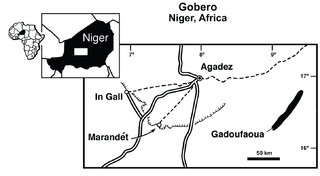 W
WThe Elrhaz Formation is a geological formation in Niger, central Africa.
 W
WThe Enon Formation is a geological formation found in the Eastern and Western Cape provinces in South Africa. It is the lowermost of the four formations found within the Uitenhage Group of the Algoa Basin, its type locality, where it has been measured at a maximum thickness of 480 metres (1,570 ft). Discontinuous outcrops are also found in the Worcester-Pletmos and Oudshoorn-Gamtoos Basins, including isolated occurrences in the Haasvlakte, Jubilee, and Soutpansvlakte Basins near the small town Bredasdorp.
 W
WThe Farak Formation is a geological formation in Niger, central Africa.
 W
WThe Galula Formation is a geological formation located south of Lake Rukwa in Tanzania, part of the Red Sandstone Group of the Rukwa Rift Basin. Along with the unconformably overlying Oligocene Nsungwe Formation. It is divided into two members, the lower Mtuka Member and the upper Namba Member.
 W
WThe In Beceten Formation, also Beceten or Ibecten is a Coniacian to Santonian geologic formation in the Iullemmeden Basin of Niger. Dinosaur remains are among the fossils that have been recovered from the formation, although none have yet been referred to a specific genus. The lithology primarily consists of clays, fine limestones and sandy clays.
 W
WThe Iouaridène Formation is a Mesozoic geologic formation in Morocco. Fossil sauropod and theropod tracks have been reported from the formation. It is part of the 'Red Beds' of Morocco alongside the Guettioua Sandstone and Jbel Sidal Formation. The lithology consists of cyclic alternation of meter scale red mudstones and 10's of cm scale carbonate cemented mudstones to very fine sandstones.
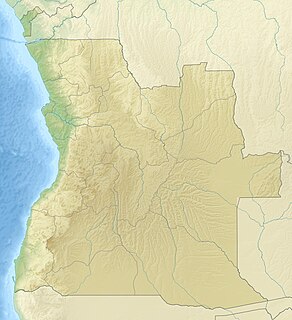 W
WThe Itombe Formation is a geological formation of the Kwanza Basin in Angola dating back to the Turonian stage of the Late Cretaceous. The environment of deposition is shallow marine. Reptile fossils have been recovered from the Tadi beds locality within the formation, including the dinosaur Angolatitan, the mosasaurs Angolasaurus and Mosasaurus iembeensis and the turtle Angolachelys. Itombe formation was considered Turonian in age, but new data suggests to be Coniacian.
 W
WThe Kalahari Deposits is an Early Cretaceous (Aptian) geologic formation in South Africa. Dinosaur remains diagnostic to the genus level are among the fossils that have been recovered from the formation. The depositional environment is described as a crater lake where poorly lithified, concretionary conglomerate and volcaniclastic, intraclastic, calcareous mudstone were deposited under quiet subaqueous conditions, probably a "crater-fill succession above an olivine-melilitie intrusion".
 W
WThe Kem Kem Group is a geological group along the Algeria–Morocco border in the Kem Kem region of eastern Morocco, whose strata date back to the Late Cretaceous. Its strata are subdivided into two geological formations, the older Douira Formation and younger Gara Sbaa Formation.
 W
WThe Ksar Metlili Formation is a geological formation in eastern High Atlas of Morocco, it is late Tithonian to Berriasian in age. It is approximately 80 metres (260 ft) thick and primarily consists of mudstone and sandstone, with thin calcareous beds. One of these calcareous beds near the middle of the sequence is an important microvertebrate locality. Subsequent to the original site, several other localities have been sampled. The depositional environment is thought to be near shore deltaic.
 W
WThe Lapurr Sandstone, also spelled Lapur Sandstone, previously considered part of the informal "Turkana Grits", is a geological formation in Kenya. It is the oldest unit in the Turkana Basin. The strata date back to the Late Cretaceous, likely Campanian to Maastrichtian, based on palynology and the presence of dyrosaurs and mosasaurs, the upper part of the unit likely extends into the Palaeogene, based on zircon dating. It predominantly consists of fine-coarse arkosic sandstone, which has been interpreted as either been deposited in fluvial or shallow marine conditions. Dinosaur remains among other vertebrates have been recovered from it around Lokitaung Gorge, though these mostly consist of heavily abraded, isolated bones of robust morphology like sauropod limb bones and caudal vertebrae.
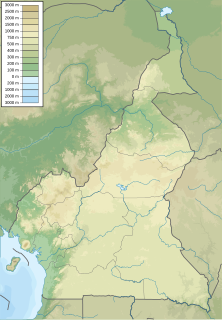 W
WThe Logbadjeck Formation, also known as the Mungo River Formation, is a Late Cretaceous geologic formation in Cameroon. It is Turonian to Campanian in age, and represents a marine depositional environment. Pterosaur fossils have been recovered from the formation.
 W
WThe Maevarano Formation is a Late Cretaceous sedimentary rock formation found in the Mahajanga Province of northwestern Madagascar. It is most likely Maastrichtian in age, and records a seasonal, semiarid environment with rivers that had greatly varying discharges. Notable animal fossils recovered include the theropod dinosaur Majungasaurus, the early bird Vorona, the flying dromaeosaur Rahonavis, the titanosaurian sauropod Rapetosaurus, and the giant frog Beelzebufo.
 W
WThe Quseir Formation is a Geological Formation in the vicinity of the Kharga Oasis in Egypt. It is Campanian In age. The lithology largely consists of soft shale with hard bands of sandstone, siltstone and phosphorite. The environment of deposition was nearshore to freshwater fluvio-lacustrine characterized by moist and aquatic habitats with a tropical warm-humid climate. It is conformably overlain by the marine late Campanian-Maastrichtian Duwi Formation, and unconformably overlies the Turonian Taref Formation. The dinosaur Mansourasaurus was discovered in the formation., Additionally the lungfish genera Lavocatodus and Protopterus and the Crocodyliform Wahasuchus are also known.
 W
WThe Shendi Formation is a Late Cretaceous geologic formation of the Atbara-Shendi Basin in northern Sudan. Indeterminate theropod remains have been recovered from it. As well as those of the dyrosaurid Hyposaurus. It consists of a lower unit of fine grained meandering channel sediments, separated by an erosive contact with overlying meandering to braided river channel sandstones.
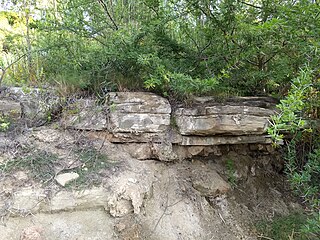 W
WThe Sundays River Formation is a geological formation found in the Eastern and Western Cape provinces in South Africa. It is the second youngest of the four formations found within the Uitenhage Group of the Algoa Basin, its type locality, and the only location where outcrops have been located. The Sundays River has been measured at a maximum thickness of 2,000 metres (6,600 ft).
 W
WThe Wadi Milk Formation is a geological formation in Sudan whose strata date back to the Late Cretaceous. Originally, the formation was thought to be Albian to Cenomanian, later research has provided dating to the Campanian to Maastrichtian. Dinosaur remains are among the fossils that have been recovered from the formation. It stretches from the lower Wadi Al-Malik across the Wadi Muqaddam into the Bayuda Desert.